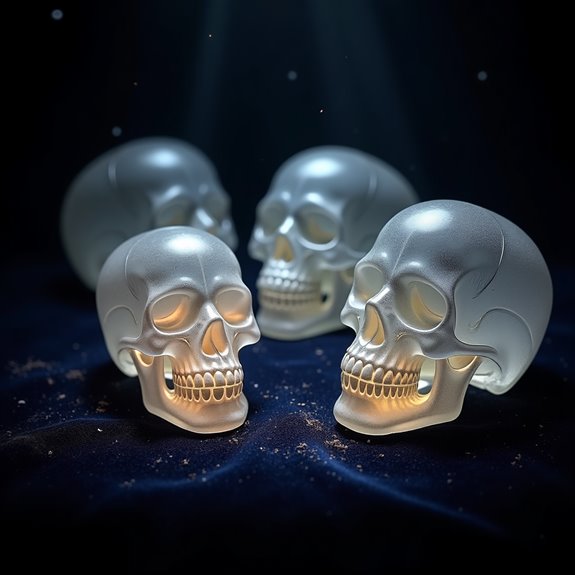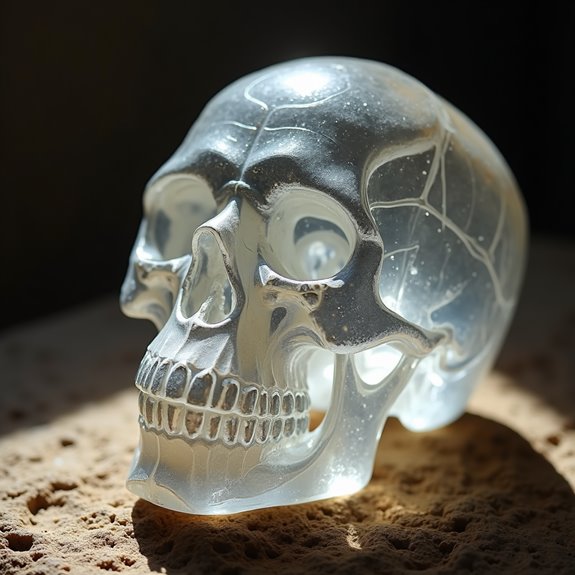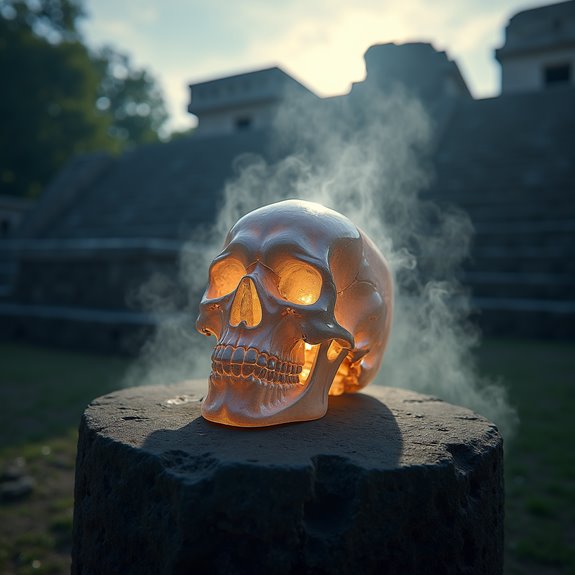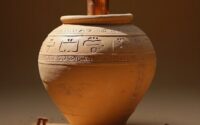Are the Crystal Skulls of Mesoamerica Real or Forged?
The debate surrounding the authenticity of crystal skulls from Mesoamerica remains heated. Some believe these artifacts contain ancient knowledge or spiritual significance, while others argue they’re modern imitations crafted in the 19th century. The exquisite detail of the skulls raises further questions about their origins and purposes. As both sides present compelling arguments, the quest to uncover the truth about these enigmatic pieces of history continues to intrigue scholars and enthusiasts alike.
Introduction

The allure of crystal skulls captivates many, intertwined with legends and intrigue from Mesoamerican cultures. These enigmatic objects have sparked curiosity and debate among archaeologists, historians, and enthusiasts alike. The stories surrounding them often suggest mystical properties or ancient wisdom, heightening their enigmatic charm. While some believe these crystal masterpieces held spiritual significance for ancient civilizations, skeptics argue they’re merely modern forgeries. The stunning craftsmanship and the sheer existence of these artifacts raise questions about their origins and purposes. As researchers investigate deeper into their history, they unearth connections to both myth and reality. Each skull tells a story, inviting further exploration into cultural beliefs and artistic practices, making them more than just objects—they’re symbols of humanity’s fascination with the unknown.
Mesoamerican Artifact Discussions

While exploring Mesoamerican artifacts, scholars uncover a rich tapestry of history, culture, and artistry. These artifacts, ranging from intricate pottery to elaborate sculptures, often reflect the complex societies that created them. Researchers debate authenticity and origins, especially concerning pieces like the infamous crystal skulls. Many argue these items hold cultural significance, embodying ancient beliefs and practices. Others highlight the impact of modern forgers who exploit the allure of antiquity, fueling skepticism among experts and enthusiasts. Each discussion brings forth varying perspectives, shaping the narrative around these treasures. By analyzing diverse materials and techniques, scholars continually endeavor to understand the context and meaning behind Mesoamerican artifacts, enriching the dialogue about heritage and historical truth.
Notable Cases or Sightings

Many enthusiasts and researchers have reported notable cases of crystal skull sightings, each adding to the intrigue surrounding these artifacts. One compelling case involved the Mitchell-Hedges skull, claimed to be discovered by F.A. Mitchell-Hedges in 1924. Its detailed craftsmanship and purported mystical properties captivated many. Another significant sighting occurred in the 1970s when explorer and author Frank Joseph showcased a skull he alleged was from ancient origins, stirring debate. Likewise, the British Museum’s skull, once thought to be an authentic artifact, attracted attention due to contradictory analyses. These instances’ve fueled theories of origins and purposes, with each sighting contributing to the ongoing fascination and exploration of these enigmatic crystal skulls. They remain a topic of intense interest and speculation in Mesoamerican studies.
Common Theories or Explanations
Enthusiasm surrounding crystal skulls spurs curiosity about their origins and functions. Some theories suggest these artifacts were created by ancient civilizations as religious or ceremonial objects, intended to connect with divine powers. Others propose that the skulls possess mystical properties, believed to enhance spiritual awareness or healing. Skeptics argue they’re modern forgeries, crafted in the 19th century using advanced techniques not available to ancient Mesoamericans. This view posits that their intricate carvings and polish contradict the artistic styles of the time. Additionally, some researchers speculate that they might be extraterrestrial in origin, linking them to UFO phenomena. Despite varying interpretations, the fascination remains, with many drawn to their enigmatic allure and presumed historical significance.
Frequently Asked Questions
What Materials Are Commonly Used to Create Crystal Skulls?
Crystal skulls typically contain materials like clear quartz, amethyst, and other gemstones. Skilled artisans carve these materials, often for decorative or metaphysical purposes. Many believe these unique creations hold special properties, enhancing their appeal among collectors.
How Can One Distinguish Real From Fake Crystal Skulls?
To distinguish real from fake crystal skulls, an expert examines clarity, weight, and craftsmanship. They’ll check for inclusions and imperfections, while also considering the material’s origin, as genuine crystals often have historical significance and unique properties.
Are There Any Known Forgers of Crystal Skulls?
Many forgers have emerged over the years, creating imitations that mimic ancient styles. These individuals often capitalize on the intriguing lore surrounding crystal skulls, generating significant interest among collectors and enthusiasts alike, but they’re not authentic.
What Cultural Significance Do Crystal Skulls Hold?
Crystal skulls symbolize spiritual enlightenment and ancestral wisdom in various cultures. They’re often associated with rituals and healing practices, reflecting humanity’s connection to the mystical and the material world’s deeper understanding. Their allure captivates many across generations.
Have Any Scientific Tests Been Conducted on Crystal Skulls?
Scientists have conducted various tests on crystal skulls, examining their materials and creation methods. Their findings revealed inconsistencies, prompting discussions about authenticity, origins, and the potential influence of modern craftsmanship versus ancient techniques in their construction.


